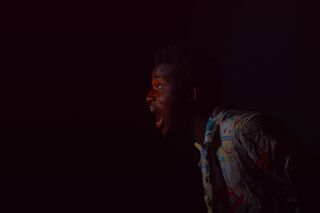Freudian Psychology
Are Mental Disorders Diseases?
A new paradigm stands the disease model on its head.
Posted June 14, 2022 Reviewed by Jessica Schrader
Key points
- A newly recovered paradigm, “madness-as-strategy,” sees mental illness as purposeful, not pathological.
- This paradigm goes back to ancient times but has modern advocates.
- “Madness-as-strategy” can help those who have been diagnosed with mental disorders.
Depression is a pathology of normal sadness. Psychopathy comes from a deformed amygdala. Delusions come from broken dopamine circuits. The key to healing the mad? Find the dysfunction and fix it—just like you’d repair a defective thermostat or an iPhone dropped in the toilet.
This disease model isn’t new. The unknown author of On the Sacred Disease, penned around 400 B.C., says that people become mad when their brains are too hot, cold, moist, or dry. Nearly 2,500 years later, in 2012, the head of the U.S. National Institute of Mental Health declared flatly that “mental disorders can be addressed as disorders of brain circuits.”

This way of thinking is so entrenched in modern psychiatry that it’s hard to see as just one perspective among others—that is, as a style of interpreting data. We mistakenly treat it as an objective fact in its own right. Mental disorders are diseases. Also, the sun rises every day. Also, tuna fish sandwiches have tuna in them.
Outside the Disease Paradigm
I find it hard to wriggle out of an old paradigm without giving it a name. I’ve named this old paradigm madness-as-dysfunction. It says that when someone is mad, something inside of them has broken down. Something in their mind, brain, spirit, or body isn’t working the way nature intended.
As a philosopher and historian of medicine, I’ve recently identified a very different paradigm, one that’s just as old as madness-as-dysfunction, and that tags alongside it like an annoying little brother. I call this alternative paradigm madness-as-strategy.
Madness-as-strategy holds that some forms of madness are designed responses to the trials of life. They’re not defects, but solutions to existential crises that have haunted our species for thousands of years.
Calluses are designed responses to friction. Fevers are designed responses to infection. Are delusions a designed response to a painful reality? Is depression a designed response for navigating delicate interpersonal situations? Well, why not?
Evolutionary psychologists often flirt with the idea that some mental disorders have a purpose, function, or goal. But what they’ve failed to see is that this view is a modern incarnation of a very old style of medical wisdom, one with its own figureheads and founders.
An Alternative Tradition: Madness-as-Strategy
For example, at the beginning of the twentieth century, Freud speculated that all the mental disorders of his day—hysteria, compulsive behavior, delusions—were unconscious, goal-directed strategies, not diseases. They help us to symbolically fulfill our forbidden desires.
Freud often reminded his medical colleagues not to confuse function with dysfunction, purpose with pathology. True, Freud was wrong about a lot of things. But he wasn’t wrong about seeing madness from the standpoint of design.
A century before Freud, the German physician Johann Christian August Heinroth—the first chair of psychiatry in Europe, and the first to use the word “Psychiatrie” in a textbook—proclaimed that delusions are more like calluses than cancer. They’re nature’s method of protecting the mind from a painful reality. They might even prevent a worse fate.
Around the same time, the great French physician Philippe Pinel argued that psychotic episodes were like fevers. Psychosis isn’t a disease to be cured, but an essential part of the healing process. Pinel thought those episodes should run their course in a safe environment.
Pinel’s advice stood in stark contrast to the advice of his English colleague John Haslam. Haslam thought that patients in the throes of psychotic episodes needed a strict regimen of bleeding, vomiting, and purging.
There’s much to be said for how madness-as-strategy might shake up research and treatment in psychiatry. For example, Rosa Ritunnano and her colleagues recently considered its implications for future research on delusions—a topic I’ll return to in my next post.
Thinking Differently About Diagnosis
But I want to focus on something more personal. How does madness-as-strategy impact the way that we—anyone who’s ever been diagnosed with a major mental disorder—think about ourselves?
For some of us, madness-as-strategy has a liberating and empowering quality. It means that our delusions, our depression, our dissociative episodes, aren’t the byproducts of a defective mind. Instead, they might be ingenious solutions to the problems life has thrown our way.
The point here isn’t to destroy madness-as-dysfunction or to deny its value entirely. Some mental disorders do stem from biological dysfunctions. Lewy body dementia, for example, is caused by malformed proteins in the brain. Both perspectives can comfortably co-exist—as long as they make space for the other.
Instead, the point is to help us adopt multiple perspectives on a complex reality, like the proverbial blind men and the elephant. Recognizing madness-as-strategy as a valid perspective helps us better meet the different needs of those society deems mad.




